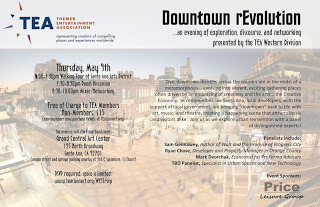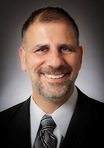Sam Gennawey's Blog, page 7
May 30, 2013
From the Crazy Mixed Up Files of Samland
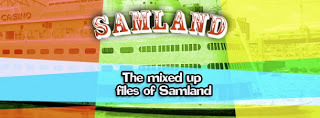 I’m constantly working on all kinds of stories, research and ideas. Some become full blown articles here on MiceChat, others make it into books. Often, however, there are bits and pieces of ideas left on the cutting room floor. Let’s put a few of those to good use. In today’s Samland Grab Bag, we cover a range of topics: from an unsuccessful Six Flags venture, to the forming of a resort at Walt Disney World, and finally a brand new “game” that you can play while learning a bit of history. Let’s begin!
I’m constantly working on all kinds of stories, research and ideas. Some become full blown articles here on MiceChat, others make it into books. Often, however, there are bits and pieces of ideas left on the cutting room floor. Let’s put a few of those to good use. In today’s Samland Grab Bag, we cover a range of topics: from an unsuccessful Six Flags venture, to the forming of a resort at Walt Disney World, and finally a brand new “game” that you can play while learning a bit of history. Let’s begin!READ MORE AT MICECHAT!
Published on May 30, 2013 10:07
May 29, 2013
Disneyland Design Basics - Part 2
Posting #2
Last time I talked about Walt Disney and his Imagineers desire to create a place that reassurances us that everything will be okay while we were having a good time with our families. How did they accomplish this?
The real world feels alive when there is a certain messy vitality. A theme park succeeds when there is a lack of visual contradictions. It is virtually impossible to blend these qualities without creating a space that feels uncomfortable and undesirable.
Among other factors, architect Robert Venturi came to the conclusion that successful and dynamic urban environments contain a “messy vitality over obvious unity.” Both agree that it is this quality that is necessary if a place is to feel authentic and resonate with meaning to the users. Such places are embedded with quality, variety, and surprise. As a result, the environment puts you slightly on edge and you feel more alert and alive in a delightful way. However, too much of this messy vitality and you will only encourage fear. There is a delicate balance.
When asked about this difference, Imagineer John Hench said, “Most urban environments are basically chaotic places, as architectural and graphic information scream at the citizen for attention. This competition results in disharmonies and contradictions that…cancel each other [out].” He warns, “A journey down almost any urban street will quickly place the visitor into visual overload as all of the competing messages merge into a kind of information gridlock.”
Hench suggested that the only way to design a successful themed environment is to eliminate any visual contradictions. He defined a visual contradiction as “the active clutter that you see in the real world, which creates mixed messages, sets up conflicts, creates tension, and may even feeling threatening.” Hench taught his team, “If visual details disagree, guests experience active clutter, which has the same effect on the eye as a cacophony of noises has on the ear.”
By eliminating the visual contradictions, Walt had created a world that was safe, clean, and could not exist outside of the earthen berm that surrounded his park. What he created was a place that is not about fantasy but is about a sense of reassurance.
In Imagineering the Disney Theme Parks, Karal Ann Marling suggests, “One of the consistent hallmarks of Disney architecture is its refusal to be avant-garde: reassurance, on the contrary, means using the familiar conventions of real-world architecture – and then ‘plussing’ them until the audience has to smile.”
Although he was no fan, Robert Venturi does concede, “Disney is nearer to what people really want than anything architects have ever given them.
Published on May 29, 2013 06:00
May 27, 2013
Disneyland Design Basics - Part 1
Posting #1
I am an urban planner and planning historian that has a thing for theme parks, amusement parks, and World’s Fairs. This intellectual curiosity lead to a book about Walt Disney’s interest in placemaking entitled Walt and the Promise of Progress City. As you will see, my focus is usually about the history and design of the North American Disney theme parks but I will stray now and again to check out other venues.
Because I spend a lot of time working on planning issues outside of the theme park gates and spend a lot of time writing about what goes on inside of those gates, I am frequently asked if there is a difference in the spatial design process between theme parks and the world outside the front gate. As you know better then anybody, there certainly is.
Evangelist Billy Graham once told Walt that Disneyland was “a nice fantasy.” This did not sit well with Walt. He replied, “You know the fantasy isn’t here. This is very real…The Park is reality. The people are natural here; they’re having a good time; they’re communicating. This is what people really are. The fantasy is – out there, outside the gates of Disneyland, where people have hatreds and people have prejudices. It’s not really real!”
When somebody suggested the only reason people go to Disneyland was escapism, Disney Legend John Hench took offense and disagreed. He said, “There was never a Main Street like this. But it reminds you of some things about yourself.” He added, “What we are selling is not escapism, but reassurance.” A visit to Disneyland reassures us that things will be okay. Here, everything works, places can be clean, people can be nice, and the pace of the world feels right. Imagineers Marty Sklar and John Hench have described the urban design for Disneyland as the “architecture of reassurance.”
Hench said that Disneyland, “Tried to present an undilutedly rosy view of the world; contradiction or confusion were qualities the planners of Disneyland associated with the defective, poorly planned, conventional amusement park.” He added, “That Disneyland offered an enriched version of the real world, but not an escapist or an unreal version. We program out all the negative, unwanted elements and program in the positive elements. We’ve taken and purified the statement so it says what it was intended to.”
Make no mistake. The spaces within the park are not representative of reality but become a hyper reality – stylized and tightly edited versions of the real thing. The buildings are shrunk and edited to meet the needs of the story that binds everything together.
“Walt wanted all the details to be correct,” Hench said. “What it amounted to was a kind of visual literacy.” He suggested that each space is like a “bead or charm in a necklace. The same thing was applied as you walk around the park. Continuity was the same. Whether you’re slow or fast, what you look at it the same.”
Theme parks and the real world operate under different urban design organizing principles. Next time I will dive deeper into those differences.
Published on May 27, 2013 06:00
May 23, 2013
What's it Called? Monorail!
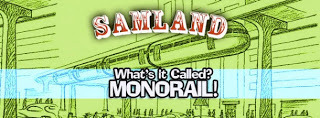 I realize that most people associate early Monorails with Walt Disney. It is well-known that one of the earliest drawings of Tomorrowland by Herb Ryman had one crossing over the entrance. The Disneyland Monorail was the first daily operating monorail in the Western Hemisphere. Back when the line was extended to the Disneyland Hotel, it was the first US monorail to cross a public street. However, there has been a long history of monorails in the United States and elsewhere, even in the Los Angeles area.READ MORE AT MICECHAT
I realize that most people associate early Monorails with Walt Disney. It is well-known that one of the earliest drawings of Tomorrowland by Herb Ryman had one crossing over the entrance. The Disneyland Monorail was the first daily operating monorail in the Western Hemisphere. Back when the line was extended to the Disneyland Hotel, it was the first US monorail to cross a public street. However, there has been a long history of monorails in the United States and elsewhere, even in the Los Angeles area.READ MORE AT MICECHAT
Published on May 23, 2013 21:06
May 22, 2013
PATCHWORK: MODERN HANDMADE FESTIVAL: Downtown Santa Ana, CA
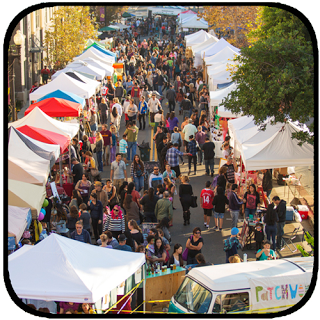
PATCHWORK: MODERN HANDMADE FESTIVAL
Downtown Santa Ana, CA
SUNDAY, MAY 2611:00 a.m. - 5:00 p.m.
+ 2 Live Music Stages, KCRW DJs and 20 Food Crafters!
GCAC 2nd Street Promenade, Sycamore Street and 3rd StreetSanta Ana, CA 92701http://patchworkshow.com/craft-fair-locations/santa-ana-events/
PATCHWORK FESTIVAL IS FREE TO THE PUBLIC
You will get to peruse 150+ booths featuring local independent artists, designers & crafters at the show. These amazing creators will be showcasing their wares including: clothing for men, women & kids, accessories, home goods like art, pottery & glassware, craft kits & patterns, knit & crochet items, stationary & paper goods, plushies, purses, handbags and so much more!
You can snack on delicious creations from local restaurants and unique food trucks.
Bring the kids so they can make art at the DIY craft booth.
WHAT'S UNIQUE ABOUT THE SANTA ANA EVENT?Where it all started… Patchwork Santa Ana is the original location of the festival and the biggest event of the five Patchwork festivals, drawing thousands of customers for over 6 years. In 2012, the event moved from the Buffalo Street location to downtown, in the heart of the artist village next to our friends Memphis, the Gypsy Den, El Centro Cultural de Mexico, among many others. This urban and historical setting encompasses 3 different streets and incorporates local galleries, museums and a handful of restaurants and bars.
COMPLETE DETAILS AND LIST OF SPONSORS CAN BE FOUND ONLINE:http://patchworkshow.com/craft-fair-locations/santa-ana-events/
Published on May 22, 2013 06:00
May 21, 2013
THE USE AND ABUSE OF THE URBAN BLOCK
COLLOQUIUM VIII: “THE USE AND ABUSE OF THE URBAN BLOCK”
Presented by the Los Angeles Region Planning History GroupCity of San Gabriel, City Hall Council Chambers 425 S. Mission Drive, San Gabriel, CA 91776**
Saturday, June 29, 2013
Free Parking at City Hall, Entering on McGroarty Street; parking also available at Mission Playhouse, 320 S. Mission Drive, San Gabriel
Continental Breakfast Reception: 9:30 a.m. Colloquium and Lunch: 10:00 a.m. – 2:00 p.m.
**PLEASE USE THE ATTACHED FORM TO REGISTER**
The urban block is a critical and fundamental unit in every city. Its crucial role as the mediating element between individual site and neighborhood cannot be overestimated. Yet, in many ways, this significance has been lost; for decades, the block has remained marginalized in how we plan, design and develop the urban landscape. Much time, effort, and treasure have been focused on individual lots and buildings, ignoring their sometimes detrimental impacts on urban fabric and urban life. At the other end of the scale, many development projects are big enough to dwarf the block itself. The block has been stretched, squashed, scraped and repurposed: suburban mega-blocks hold immense retail structures amid a sea of cars; residential super-blocks with repetitive buildings disrupt traditional neighborhoods, and aging inner-city blocks lined with parking spaces disrupt and degrade the streetscape.
In recent years, the design and configuration of the urban block has gained renewed attention and respect. Numerous residential, commercial, and mixed-use projects are being undertaken not as mega-buildings but as block-scale, street-friendly developments, reestablishing the traditional relationship between the urban grid and the public realm. Focusing attention on the urban block suggests such questions as: How can block design mediate between urbanism and architecture? How do residential and commercial environments affect block design? How can parking needs be balanced with building program while generating a rich public realm for people? What regulations and policies can encourage/require good block design? As California cities struggle with the death of large, subsidized redevelopment projects, could the urban block itself provide an ideally-sized solution?
A distinguished panel will address these and other questions regarding the urban block:
Todd Gish, USC Price School of Public Policy; Moderator Vinayak Bharne, Director of Design, Moule & Polyzoides, Architects and Urbanists Stefanos Polyzoides, Principal, Moule & Polyzoides, Architects and UrbanistsAlan Loomis, Principal Urban Designer, City of Glendale (invited)
RESERVATIONS
Event is $40; for students with valid student IDs, $20 Fee includes Continental Breakfast, Lunch
Seating is limited to 80 attendees; registration opened May 21, 2013 Please confirm your attendance to: Alice Lepis, Secretary alepis@prodigy.net (preferred) or at 818.769.4179 on or before Noon, Wednesday, June 26, 2013
You may pay either of two ways:
Pay Pal which is accessible through the LARPHG website: LosAngelesRegionPlanningHistoryGroup.org
(or)
Check payable to: “Los Angeles Region Planning History Group” with completed registration form sent to:
Los Angeles Region Planning History GroupC/o Alice Lepis, Secretary11227 Acama StreetNorth Hollywood, CA 91602
Please include a copy of your student ID if you are registering as a student.
PLEASE PRINT CLEARLY:
FIRST NAME LAST NAMEORGANIZATIONE-MAILADDRESSCHECK IF STUDENT
Published on May 21, 2013 06:00
May 20, 2013
Walt Disney Family Museum Overview
Fans of Walt Disney had two destinations where they could get closer to the magic– Disneyland and Walt Disney World. Now there is a third - The Walt Disney Family Museum (WDFM) in San Francisco.
The WDFM opened to critical acclaim on October 1, 2009. The museum is located in the historic Presidio near the Golden Gate Bridge. The former military base has been around for over 220 years and guards one of the most beautiful spots on earth. The architects for this imaginative award-winning project, Page & Turnbull, reimagined one of five identical Army barracks built in the 1890s that flanked the parade grounds. The refurbishment of the building was done with great care, elegant but not pretentious, much like the man. In addition to the museum are a gift store, small café, and a movie theater. Additional display and conference space and the administrative offices are located in separate buildings. You can take public transportation or park out front on the former parade grounds.
You enter the museum through a large lobby with plenty of seating to gather your party. Along the walls are some of the 900 awards given to Walt Disney including the Presidential Medal of Freedom (1964). On display are some of the thirty-two Academy Awards® given to Walt including the Snow White and the Seven Dwarfs statue with one large Oscar and the seven miniatures. The furniture from the family apartment above the fire station at Disneyland is also on display.
The museum is organized around ten galleries that take you chronologically through Walt Disney’s professional and personal life. In each gallery we hear Walt’s own voice telling us his story. Researchers have clipped from hours of interviews to find relevant material that support the graphic displays.
We start with Walt’s “Beginnings” in Gallery 1. There is the Disney family tree; his memories of his boyhood home in Marceline, Missouri, and his earliest artworks. A reproduction of the ambulance Walt drove in Europe during the end of World War I is on display and a reminder that this experience fueled his ambitions and when he returned to Kansas City he partnered with Ub Iwerks to form Laugh-O-Gram. After learning about the early history of animation, including books by Eadweard Muybridge and animated cartoons by E.G. Lutz, you move to the next chapter in Walt’s young life.
It is this elevator ride to the second floor galleries that provides an early, emotionally powerful moment. The elevator is dressed as the interior of a railroad passenger coach on the way to Los Angeles from Kansas City. Walt’s company went bankrupt and we hear him talk about the need for a good hard failure when you are young. But he would not be stopped and was motivated to move to Hollywood with $40, a “coat and a pair of trousers that didn’t match,” and his 1923 film Alice’s Wonderland.
The elevator doors open to Gallery 2 and you enter “Hollywood” from 1923 to 1928. Walt moved Los Angeles, founded the Disney Brothers Studio, got married, and tasted his first drink of success with the Alice shorts and Oswald the Lucky Rabbit. The Oswald series was successful but it was the loss of the character to his distributor that taught Walt and Roy many lessons. The fateful telegram from Walt to Roy telling him DON'T WORRY EVERYTHING OK WILL GIVE DETAILS WHEN ARRIVE is on display. Talk about the ultimate optimist. Most men would have been crushed. Walt became inspired.
These events led to the creation of Mickey Mouse. From this point forward, Walt would always be in control of his intellectual properties, which has been at the core of the Disney organization success. The gallery features the earliest documented drawing of the future superstar and corporate symbol. Along one wall is a cell-by-cell reproduction of a scene in Steamboat Willie. Also included is Walt and Lillian’s wedding certificate and the beginning of the great love shared between them.
Walt was exploring “new horizons in the 1930s” with the success of Mickey Mouse. Mickey was quickly becoming one of Hollywood’s brightest stars (just look at the display with all of his merchandise) and the Disney roster kept growing with the addition of characters that display true personality such as Minnie, Pluto, Goofy (aka Dippity Dog), and Donald.
The gallery explores the world of the Silly Symphony series. Walt would use these new cartoons to expand the vocabulary of the art, experiment with the nature of color, and depth. Many of the artists who made this magic possible are featured. One powerful exhibit is the side-by-side comparison of two versions of The Ugly Duckling, one from 1931 and the other from 1939. This is also the time when Walt was blessed with two new daughters, Sharon and Diane.
The focus of Gallery 4 is the “Move to Features” with the box-office smash Snow White and the Seven Dwarfs, a defining moment in Walt’s life and career. Walt suggested that when you are going to take a risk, go big and do it right. If the film was going to be a failure it needed to be a spectacular one. Everything about the concept and production of the film is detailed.
The success of Snow White allowed Walt to design and build the ultimate animation studio in Burbank and he said now, “We were in a new business.” Gallery 5 takes a close look at the studio facilities as well as the production of Pinocchio, Fantasia, and Bambi. There is an original animation desk as well as one of the original multi-plane cameras, which allowed for added depth and reality.
But not everything would be golden. After such incredible success, Gallery 6 tells the story of “the toughest period of my whole life.” Walt was dealt the double blow of his animators going on strike and World War II. He did adapt and the studio turned to help the war effort by producing the most incredible training films. There were also bright spots including Dumbo and the “El Grupo” expedition to South America that gave birth to The Three Caballeros and Saludos Amigos.
Gallery 7 is focused on the “Postwar Production” period. This was one of the most productive times at the studio. The gallery is filled with innovative interactive technology and multimedia displays. The upper perimeter is wrapped in a wavy video screen. There are video stations with “bubbles” projected on a desk-like panel that you touch to manipulate. Tap a bubble and it expands and an image is projected on a screen in front of you. Fans of Mary Blair and 20,000 Leagues Under the Sea will find much to enjoy.
One of the most dramatic architectural moments comes when you enter Gallery 8 “Walt and the Natural World.” As I stated earlier, the museum is contained within the old Army barracks building. However, Gallery 8 and 9 are part of a new 20,000 square foot addition. As you enter the gallery the familiar globe from the True-Life Adventure series greets you. Along one wall are televisions playing clips from the series. On the other wall is a floor-to-ceiling glass window with one of the most spectacular views of the Golden Gate Bridge you will find anywhere.
For me, the highlight of the museum is Gallery 9; “The 1950s and 1960s: the big screen and beyond.” The gallery contains a long ramp that leads from the second floor to the ground floor. Along the way you see the building blocks that led to the creation of Disneyland. It begins with Walt’s backyard railroad with the original Lilly Belle model steam locomotive on display. His fascination with miniatures is highlighted. His early involvement with television is also on display including Zorro, The Mickey Mouse Club, the Man In Space series, and Davy Crockett.
However, the real highlight is at the bottom of the ramp. Here you will find the model of the Disneyland that never was and always will be. It contains virtually every idea Walt had for the park including existing attractions, extinct attractions, and the ones that never got off the drawing board. The model is rich in details and many of the elements are animated. It is packed with eye candy including John Hench’s original concept for Space Mountain, the 1967 version of Tomorrowland, and the Conestoga wagons riding over the berm in an expanded Frontierland.
The gallery goes beyond Disney with displays for Sleeping Beauty, The Shaggy Dog, Toby Tyler, Old Yeller, Darby O’Gill, Mary Poppins, the 1960 Winter Olympics in Squaw Valley, and the 1964-1965 New York World’s Fair featuring models, sketches, and artifacts. The EPCOT display was very special to me. During this period, Walt’s family also grew with two sons-in-law and seven grandchildren.
For many, making it through Gallery 10 entitled “December 15, 1966” is going to be tough. We begin with Walt talking about his final project – the Mineral King Ski resort high up in the Sierra Nevada mountains of California. He looks old and tired in the press conference video. Nearby are personal objects that were collected by his children and grandchildren.
In the next room is a television playing the announcement of his death while the adjoining walls are plastered with editorial cartoons covering the event. Just about the time you bring out the tissues you enter the final room; a brilliant white chamber with video screens displaying all of the things Walt accomplished with quotes from those who knew him best.
The entire museum is a fitting tribute to the most influential entertainer of the 20th Century and a must do for any Disney fan.
All photos courtesy of The Walt Disney Family Museum
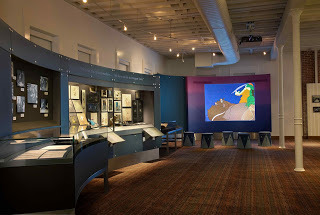
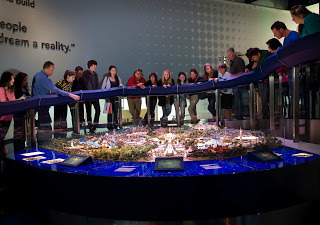
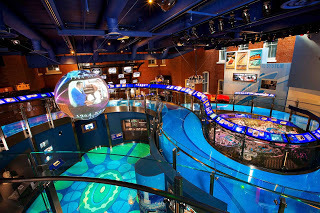
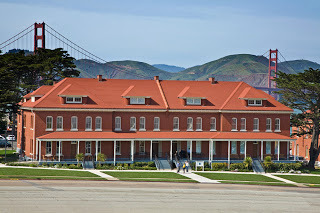
The WDFM opened to critical acclaim on October 1, 2009. The museum is located in the historic Presidio near the Golden Gate Bridge. The former military base has been around for over 220 years and guards one of the most beautiful spots on earth. The architects for this imaginative award-winning project, Page & Turnbull, reimagined one of five identical Army barracks built in the 1890s that flanked the parade grounds. The refurbishment of the building was done with great care, elegant but not pretentious, much like the man. In addition to the museum are a gift store, small café, and a movie theater. Additional display and conference space and the administrative offices are located in separate buildings. You can take public transportation or park out front on the former parade grounds.
You enter the museum through a large lobby with plenty of seating to gather your party. Along the walls are some of the 900 awards given to Walt Disney including the Presidential Medal of Freedom (1964). On display are some of the thirty-two Academy Awards® given to Walt including the Snow White and the Seven Dwarfs statue with one large Oscar and the seven miniatures. The furniture from the family apartment above the fire station at Disneyland is also on display.
The museum is organized around ten galleries that take you chronologically through Walt Disney’s professional and personal life. In each gallery we hear Walt’s own voice telling us his story. Researchers have clipped from hours of interviews to find relevant material that support the graphic displays.
We start with Walt’s “Beginnings” in Gallery 1. There is the Disney family tree; his memories of his boyhood home in Marceline, Missouri, and his earliest artworks. A reproduction of the ambulance Walt drove in Europe during the end of World War I is on display and a reminder that this experience fueled his ambitions and when he returned to Kansas City he partnered with Ub Iwerks to form Laugh-O-Gram. After learning about the early history of animation, including books by Eadweard Muybridge and animated cartoons by E.G. Lutz, you move to the next chapter in Walt’s young life.
It is this elevator ride to the second floor galleries that provides an early, emotionally powerful moment. The elevator is dressed as the interior of a railroad passenger coach on the way to Los Angeles from Kansas City. Walt’s company went bankrupt and we hear him talk about the need for a good hard failure when you are young. But he would not be stopped and was motivated to move to Hollywood with $40, a “coat and a pair of trousers that didn’t match,” and his 1923 film Alice’s Wonderland.
The elevator doors open to Gallery 2 and you enter “Hollywood” from 1923 to 1928. Walt moved Los Angeles, founded the Disney Brothers Studio, got married, and tasted his first drink of success with the Alice shorts and Oswald the Lucky Rabbit. The Oswald series was successful but it was the loss of the character to his distributor that taught Walt and Roy many lessons. The fateful telegram from Walt to Roy telling him DON'T WORRY EVERYTHING OK WILL GIVE DETAILS WHEN ARRIVE is on display. Talk about the ultimate optimist. Most men would have been crushed. Walt became inspired.
These events led to the creation of Mickey Mouse. From this point forward, Walt would always be in control of his intellectual properties, which has been at the core of the Disney organization success. The gallery features the earliest documented drawing of the future superstar and corporate symbol. Along one wall is a cell-by-cell reproduction of a scene in Steamboat Willie. Also included is Walt and Lillian’s wedding certificate and the beginning of the great love shared between them.
Walt was exploring “new horizons in the 1930s” with the success of Mickey Mouse. Mickey was quickly becoming one of Hollywood’s brightest stars (just look at the display with all of his merchandise) and the Disney roster kept growing with the addition of characters that display true personality such as Minnie, Pluto, Goofy (aka Dippity Dog), and Donald.
The gallery explores the world of the Silly Symphony series. Walt would use these new cartoons to expand the vocabulary of the art, experiment with the nature of color, and depth. Many of the artists who made this magic possible are featured. One powerful exhibit is the side-by-side comparison of two versions of The Ugly Duckling, one from 1931 and the other from 1939. This is also the time when Walt was blessed with two new daughters, Sharon and Diane.
The focus of Gallery 4 is the “Move to Features” with the box-office smash Snow White and the Seven Dwarfs, a defining moment in Walt’s life and career. Walt suggested that when you are going to take a risk, go big and do it right. If the film was going to be a failure it needed to be a spectacular one. Everything about the concept and production of the film is detailed.
The success of Snow White allowed Walt to design and build the ultimate animation studio in Burbank and he said now, “We were in a new business.” Gallery 5 takes a close look at the studio facilities as well as the production of Pinocchio, Fantasia, and Bambi. There is an original animation desk as well as one of the original multi-plane cameras, which allowed for added depth and reality.
But not everything would be golden. After such incredible success, Gallery 6 tells the story of “the toughest period of my whole life.” Walt was dealt the double blow of his animators going on strike and World War II. He did adapt and the studio turned to help the war effort by producing the most incredible training films. There were also bright spots including Dumbo and the “El Grupo” expedition to South America that gave birth to The Three Caballeros and Saludos Amigos.
Gallery 7 is focused on the “Postwar Production” period. This was one of the most productive times at the studio. The gallery is filled with innovative interactive technology and multimedia displays. The upper perimeter is wrapped in a wavy video screen. There are video stations with “bubbles” projected on a desk-like panel that you touch to manipulate. Tap a bubble and it expands and an image is projected on a screen in front of you. Fans of Mary Blair and 20,000 Leagues Under the Sea will find much to enjoy.
One of the most dramatic architectural moments comes when you enter Gallery 8 “Walt and the Natural World.” As I stated earlier, the museum is contained within the old Army barracks building. However, Gallery 8 and 9 are part of a new 20,000 square foot addition. As you enter the gallery the familiar globe from the True-Life Adventure series greets you. Along one wall are televisions playing clips from the series. On the other wall is a floor-to-ceiling glass window with one of the most spectacular views of the Golden Gate Bridge you will find anywhere.
For me, the highlight of the museum is Gallery 9; “The 1950s and 1960s: the big screen and beyond.” The gallery contains a long ramp that leads from the second floor to the ground floor. Along the way you see the building blocks that led to the creation of Disneyland. It begins with Walt’s backyard railroad with the original Lilly Belle model steam locomotive on display. His fascination with miniatures is highlighted. His early involvement with television is also on display including Zorro, The Mickey Mouse Club, the Man In Space series, and Davy Crockett.
However, the real highlight is at the bottom of the ramp. Here you will find the model of the Disneyland that never was and always will be. It contains virtually every idea Walt had for the park including existing attractions, extinct attractions, and the ones that never got off the drawing board. The model is rich in details and many of the elements are animated. It is packed with eye candy including John Hench’s original concept for Space Mountain, the 1967 version of Tomorrowland, and the Conestoga wagons riding over the berm in an expanded Frontierland.
The gallery goes beyond Disney with displays for Sleeping Beauty, The Shaggy Dog, Toby Tyler, Old Yeller, Darby O’Gill, Mary Poppins, the 1960 Winter Olympics in Squaw Valley, and the 1964-1965 New York World’s Fair featuring models, sketches, and artifacts. The EPCOT display was very special to me. During this period, Walt’s family also grew with two sons-in-law and seven grandchildren.
For many, making it through Gallery 10 entitled “December 15, 1966” is going to be tough. We begin with Walt talking about his final project – the Mineral King Ski resort high up in the Sierra Nevada mountains of California. He looks old and tired in the press conference video. Nearby are personal objects that were collected by his children and grandchildren.
In the next room is a television playing the announcement of his death while the adjoining walls are plastered with editorial cartoons covering the event. Just about the time you bring out the tissues you enter the final room; a brilliant white chamber with video screens displaying all of the things Walt accomplished with quotes from those who knew him best.
The entire museum is a fitting tribute to the most influential entertainer of the 20th Century and a must do for any Disney fan.
All photos courtesy of The Walt Disney Family Museum




Published on May 20, 2013 06:00
May 9, 2013
Port Disney
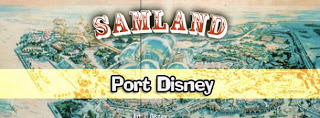
In July 1990, Disney announced plans for the new $2.8 billion Port Disney resort. This is that story.
READ MORE AT MICECHAT.
Published on May 09, 2013 10:49
May 7, 2013
New Disneyland Book By Sam Gennawey
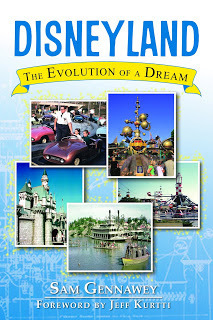 Once upon a time, Walt Disney raised three wonderful children: Diane, Sharon, and Disneyland. He nurtured all three and taught them values that would serve them well for all of their lives. He was lucky to watch his daughters grow into adulthood, but he would only live long enough to see Disneyland through its first 11 formative years.
Once upon a time, Walt Disney raised three wonderful children: Diane, Sharon, and Disneyland. He nurtured all three and taught them values that would serve them well for all of their lives. He was lucky to watch his daughters grow into adulthood, but he would only live long enough to see Disneyland through its first 11 formative years.Walt knew that happiness came most frequently when he was with his family, where he could be true to himself and true to his inner forces. After World War II, his doctors recommended that he take up a hobby as a way to alleviate the pressures of the movie studio. “A man needs a new set of problems to pull his mind away from the old ones,” Walt said.So he looked for a hobby that he could share with his f amily. Circumstances rekindled his lifelong passion for trains and miniatures.
According to Ray Bradbury, science fiction author and Walt’s good friend, “Disney knew from the start that there were two kinds of people in the world: people who enjoy happiness and people who hate it.” Walt set out to build a world that would satisfy both kinds of people. After all, that is what he had been doing his entire life with his films.
As Walt’s passion for his hobbies grew, he wanted to share it with others. This was typical; according to his daughter Diane, “When he bought things, they were to give to somebody, or to do something with, but he wanted to build an amusement park that people could come to and really be happy.” Just like him.
Building the park would be a new type of challenge for Walt. Disney historian Michael Broggie said, “During one of his visits to a local train store, he was asked about the size of his layout since he was frequently ordering additional equipment. Walt told the clerk it would never be finished.” He was becoming frustrated with the filmmaking process. “A picture is a thing that once you wrap it up and turn it over to Technicolor, you’re through,” Walt said. “The last picture I just finished . . . it’s gone. I can’t touch it. I wanted something I could keep ‘plussing’ with ideas. The Park is that.”
Disneyland was a very personal project that reflected the experiences and values of one man. Walt said the park “would be a world of Americans, past and present, seen through the eyes of my imagination—a place of warmth and nostalgia, of illusion and color and delight.”
“I always believed the reason Walt built Disneyland was that he wanted one,” said Imagineer Bruce Gordon. “He wanted the biggest train layout; he wanted a place for all his toys. In the park he had an apartment above the fire station. Walt would get up early in the morning, before the park opened, and he’d drive his fire truck around Disneyland. People would think he was crazy, but he was only playing with his toy.”
But this adventure was not some lark. Building the largest model train set and meeting the public need would become Walt’s next pursuit after animation. He said, “When I say, ‘play with it,’ I don’t mean that. Everything I do I keep a practical eye toward its appeal to the public.”
This was very important to him. He noted about Disneyland, “When they come here they’re coming because of an integrity that we’ve established over the years. And they drive hundreds of miles. I feel a responsibility to the public.” Just like raising his girls, this was just the never-ending challenge he was seeking.
Walt did not have a roadmap or instruction manual to raise his two daughters, and it was no different for creating his park. Through persuasion and collaboration, Walt and his team carefully and deliberately stumbled along their way, creating a new system to organize the built environment, one that preys on our most basic instincts. They invented the theme park.
The result was “a place for people from all over the world to come and bring their private demons, those demons that are not afraid of happiness, to allow them freedom and give them air,” wrote Ray Bradbury.
When Walt died, he left a clear mission to serve the public need, a legacy of ideas, and a group of ardent disciples to carry on. Despite their battles with the “sharp pencil boys” who did not get it, the whims of history, and their own doubts and egos, Walt’s people were able to maintain momentum, thrive, and teach future generations how to do it the Walt way. How did this happen? Why did it happen?
DISNEYLAND: THE EVOLUTION OF A DREAM is available for pre-sale at Amazon.com.
Published on May 07, 2013 08:34
April 28, 2013
Downtown rEvolution sponsored by TEA
Published on April 28, 2013 09:26

